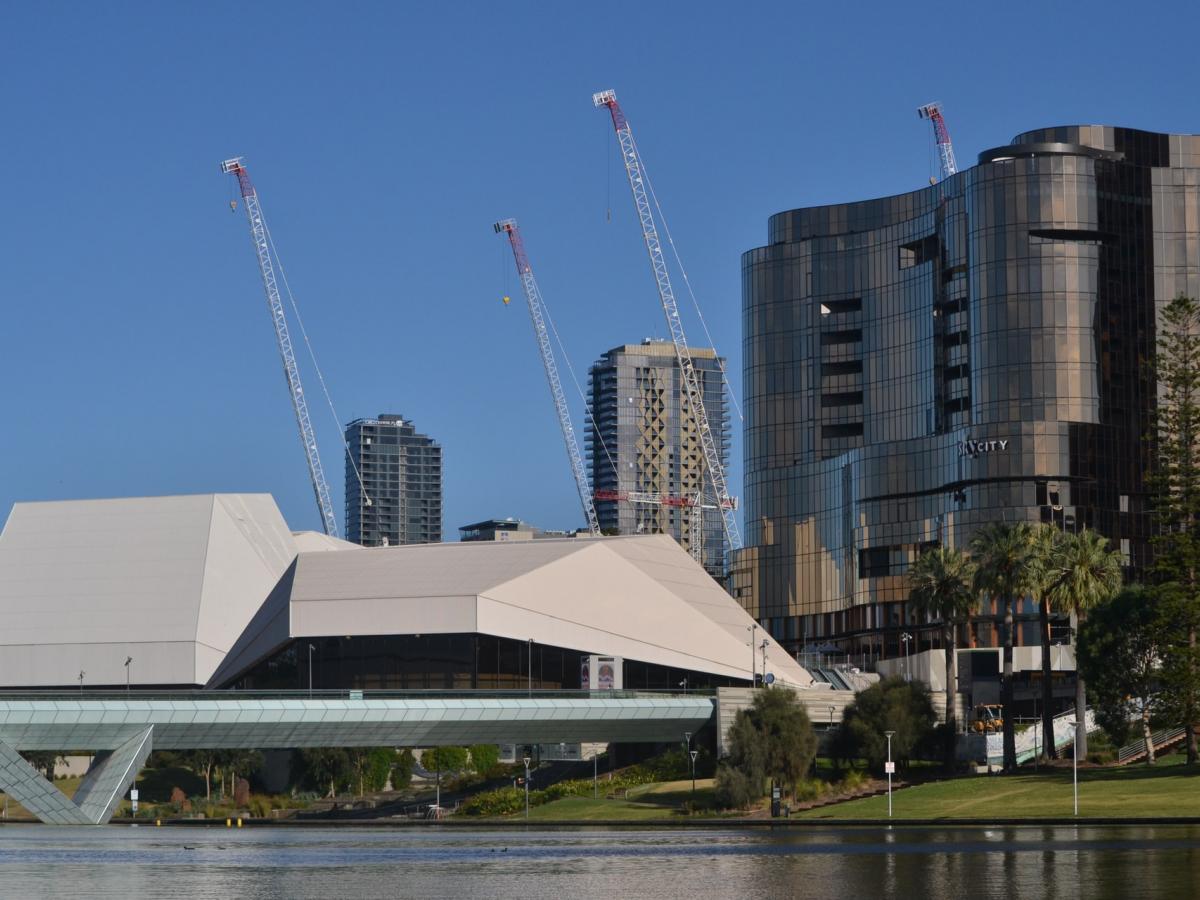SA construction sector remains strong, but faces headwinds

Overall activity in the South Australian construction sector should remain at its current robust level over the near term. But recent large price increases for inputs and the gradual erosion of recent supportive factors will present near and medium-term challenges for the construction sector, especially residential building.
These insights are contained in a newly released paper from SACES which assesses the state of general business conditions in the construction industry in South Australia.
The paper reviews a range of indicators that provide insight into the recent performance of the construction sector, including construction activity levels, forward indicators of activity, contributions to gross value added and employment, recent price trends for construction sector outputs and inputs, business counts, and the number of construction companies entering external administration.
COVID-19 has exerted a significant impact on the construction sector. In spite of a sharp slowdown in population growth due to a collapse in overseas migration triggered by the national border closure and heightened economic uncertainty, demand for housing surged during the pandemic. Among the factors that explain this remarkable strength include:
- an increase in demand for improved and larger housing as a consequence of people being forced to spend more time living and working from home (building approvals data point to a significant shift in demand for new housing from high density living toward houses);
- people’s ability to invest in housing being enhanced by a combination of interest rates falling to ultra-low levels, spending being diverted from curtailed activities, and provision of income support and employment preservation measures;
- the low interest rate environment encouraging investors to turn to the property market in search of greater returns; and
- provision of direct stimulus to home construction, particularly through the Australian Government’s temporary HomeBuilder grant program.
These supportive factors have started to fade as pandemic restrictions and support measures have gradually unwound. Some eventual slowdown in activity will be inevitable given the role of the HomeBuilder program in artificially bringing forward activity. In addition, the prospect of the next monetary policy tightening cycle arriving sooner than expected and recent large price increases for housing will act as breaks on demand for new housing.
A sustained recovery in population growth will be needed to maintain underlying demand for new housing at recent levels. But there is considerable uncertainty over how strong the recovery in overseas migration will be and whether the pre-pandemic pattern of large net interstate migration outflows from South Australia will resume with the removal of state border closures. Indeed, the latest estimates at the time of writing indicate that the state's population contracted by 609 people in the September quarter of 2021.
The other notable impact of the pandemic has been considerable price inflation within the housing construction industry - see table below. Through 2021 the prices for key inputs to home construction in Adelaide such as timber, board and joinery and steel products rose by more than 20 per cent, while prices for inputs such as plumbing products and electrical equipment rose by around 10 per cent. Such input price increases present a financial challenge for those builders who have entered into fixed-price contracts.
| 2017 | 2018 | 2019 | 2020 | 2021 | |
|---|---|---|---|---|---|
| Timber, board and joinery | 3.0 | 4.4 | -1.0 | 1.8 | 22.6 |
| Ceramic products | -1.3 | 5.1 | 1.5 | 1.4 | 8.0 |
| Concrete, cement and sand | 3.3 | 1.1 | -0.2 | -1.3 | 0.7 |
| Cement products | -2.8 | 7.9 | 2.1 | 1.5 | 6.0 |
| Steel products | 4.1 | 3.7 | -0.6 | -0.4 | 23.3 |
| Other metal products | 7.9 | 3.6 | 1.4 | 0.4 | 10.7 |
| Plumbing products | 1.6 | 3.9 | 1.4 | -0.3 | 11.8 |
| Electrical equipment | 9.8 | 3.7 | 4.8 | 12.1 | 9.6 |
| Installed gas and electrical appliances | 0.0 | 2.1 | 1.2 | 0.7 | 3.1 |
| Other materials | -0.4 | 4.8 | 0.6 | 1.4 | 5.0 |
Source: ABS, Producer Price Indexes, Australia.
Other insights from the issues paper include:
- The recent strength in construction activity has been broadly based, with activity levels being maintained at or near record levels for engineering, residential building, and non-residential building.
- Increased levels of public sector investment have played an important role in supporting construction activity in South Australian since the global financial crisis.
- In comparison with the national average, South Australia’s construction sector is moderately more geared toward engineering construction rather than residential building, which in part reflects weaker population growth.
- The price of road and bridge construction has grown at a faster pace compared to other forms of construction over time, which has implications for state and local government budgetary management.
- The number of construction companies entering external administration has fallen sharply through the first two years of the pandemic, which is consistent with a broader trend of reduced business closures during the initial stages of the pandemic.
